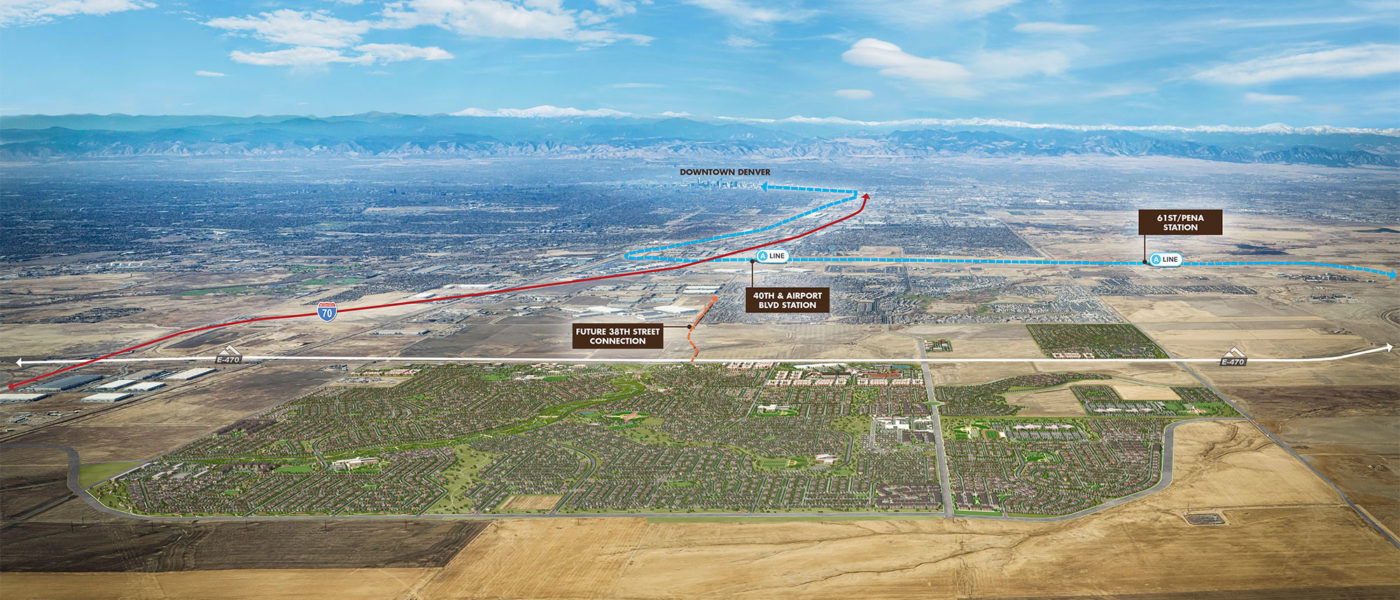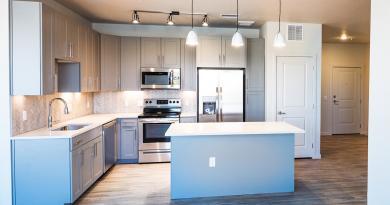Aerotropolis – A Game Changer for Aurora
The infrastructure is going into place for the 21,000-acre Aerotropolis, located south of Denver International Airport, and the work is beginning to pave the way for new development and important new interchanges and arterial roadways for the communities that surround the airport. Until now, many of these communities didn’t have the needed infrastructure in place that would contribute to the economic growth and certainly didn’t have a means to pay the cost to build its initial infrastructure.
In 2015, the ACC and Denver agreed to amend the IGA regarding development in and around DIA. This was supported by the elected officials in City of Aurora as well as the Counties and later approved 80 percent of the voters. This agreement opened up 1,500 acres for development, creating an estimated 12,500 new jobs. It has and will continue to attract great interest in the area, making approximately 21,000 acres just to the south of DIA to I-70 prime for development. An independent study estimated that the location can create 10 million square feet of retail, 30 million square feet of class A office space and 46 million square feet of industrial. This would bring more than 170,000 new jobs to the area and increase market value by $18 billion.
The barrier to achieving this economic opportunity has been identified as the lack of connectivity from DIA to I-70 and E-470 to Airpark Road. This lack of connectivity has been studied by the City for more than a decade and studies have placed the cost to overcome this barrier at $200 million and updated engineering estimates place the cost of optimal connectivity at closer to $300 million.
In order to address this cost, the Aerotropolis Regional Transportation Authority (ARTA) was formed after attempts to pass infrastructure bonding through the voters failed. It established a private investment with a tax strategy to repay a portion of the private sectors investment tied directly to the success of the development. It places the risk on the private sector and avoids "a build it and hope they will come" situation for the City. As a result, a $20 million bond was issued for infrastructure work to begin last July.
According to Matt Hopper, Chairman, ARTA, “Traditional development would most likely emerge as a patchwork of unconnected growth over the next 80-plus years and would minimize the area’s economic potential, whereas ARTA will stimulate a succinct growth pattern that can more quickly provide economic windfall to all engaged.”
ARTA is now working with a team of expert consultants and companies that include Terra Forma Solutions Inc. (performing the program management of the design/build aspects of the initial ARTA projects and the associated Metropolitan District), HR Green (one of the lead engineering consultants on the project), Summit Strategies and Fairfield and Woods. The expert team is initiating important plans and work that will provide much needed public infrastructure and help to spur economic growth and development for the existing communities – and communities yet to come – to the south and east of DIA.
Some of the infrastructure work that is currently underway or already completed includes:
- E470 Interchange with The Aurora Highlands Parkway (FHU)
- I-70 Interchange with Powhaton (BLN)
- The Aurora Highlands Parkway/38th Avenue (HRG)
- Design of the horizontal, vertical and intersection geometry, along with utility design for the Aurora Highlands Parkway
- Storm drainage has been completed and road work is underway for 26th Avenue
The E-470 Full Interchange is progressing, with the interim interchange complete and a design review planned for mid-April with ongoing analysis related to fiber relocation and protection, waterline relocation and right-of-ways. Construction of the E470 Interchange is projected to begin in 2021/2022.
The full I-70 Interchange final design has been contracted and has been progressing with plans completed in 2021. Informational meetings have taken places with Adams County and CDOT. Construction of the I-70 Interchange is projected to begin in 2021/2022.
“The work being done has already engaged and encouraged residential, commercial and industrial development by providing important interchange connections to DIA,” said Todd Johnson, the Program Manager for ARTA and The Aerotropolis Area Coordinating Metropolitan District (AACMD).
“Beyond the positive economic impact, the work will also provide the surrounding communities with easier access to DIA and E470, while alleviating traffic on Pena Boulevard and tolls on C-470. Without ARTA, none of this would be happening as rapidly as it is. ARTA alleviates the financial burden on the surrounding communities and will also ensure that housing prices during future residential development will stay low for homebuyers.”
According to Aurora Councilmember Dave Gruber, the formation of ARTA was critical. It has provided a tremendous resource that will pave the way for growth.
“The roads and interchanges will allow for density and drive ongoing development. This will bring new business and retail to the area, and result in more attainably-priced homes,” said Councilmember Gruber.
“The eastern section of Aurora is a food desert when it comes to restaurants, retail and other services. Fortunately, Aurora is evolving and the Aerotropolis will continue to make the city a destination for people who want to live, work and play in a new and exciting community that is being designed and built with the future in mind.”
In addition to the infrastructure that is being built, active housing development is also underway. Marked by a 110-foot clock tower, The Aurora Highlands master planned community is projected to be built out over the next 15 – 20 years and include 12,000 residential units with the first coming on-line in May of this year. Similar to Highlands Ranch and Stapleton, homebuyers will be lured by a range of single-family and multifamily designs, offered in eight residential villages. There will be a mix of homes for families wanting affordability, as well as move-up homes and semi-custom designs, providing an amenity-filled community for all homebuyers.
The Aurora Highlands will also include 400 acres of parkland and over 500 acres of open space, miles of trails, dozens of parks and a recreation center complete with a climbing wall, basketball court and ice rink. A Water Theme Park is also planned, with indoor pools, play structures and a sun deck. Four school sites are also planned for the community.
As many as 700 units a year will be built as the project ramps-up, and three to four million square feet of commercial and retail development will occur within its core area along E470. That work is projected to begin in 2021 with absorption happening over the following ten years. Additionally, the Aurora Highlands area will provide for 10 to 12 million square feet of industrial space, with work scheduled to begin as early as next year, and absorption taking place during the following 10 to 15 years.
With a grand opening scheduled for May of this year, the Painted Prairie master planned community will have a selection of homes from five custom builders, offering seven styles of traditional and contemporary designs. It is being designed with future homeowners and families in mind as a great place to live by creating a system of meaningful places for residents to come together. It will feature the High Prairie Park, a capstone of the community’s philosophy. This large park is designed for people of all ages to enjoy. Design concepts were based on celebrating the heritage of the high prairie and did so by preserving the natural ridge along the property and designing the park around it to provide for fantastic vies and changes vistas from every view in the park.
On the industrial front, the Majestic Commercenter in Aurora will more directly benefit from ARTA where Shamrock Foods is building a new distribution center on the west side of E470 and will have a direct connection via ARTA’s 38th Avenue and E470 interchange.
Benefits are already being realized by the formation of the ARTA and more people will enjoy its full value in the years to come
Some of the companies that are currently actively involved with the current work include:
- Terra Forma Solutions, Inc.
- HR Green
- Merrick & Company
- Ecological Resource Consultants, Inc. (ERC)
- Felsburg Holt & Ullevig
- Beam, Longest and Neff (BLN)
- Contour Services (Contour)
- SRM Holdings, LLC, the new parent company of Stormwater Risk Management, ComplianceWise and Stormwater Logistics.
Exclusive special feature originally published in Colorado Construction & Design Spring 2020 edition, starting on page 32, written by Paul Suter, CCD Magazine Contributor/Reporter.
Photo courtesy of the project team and https://aerotropolisrta.org



